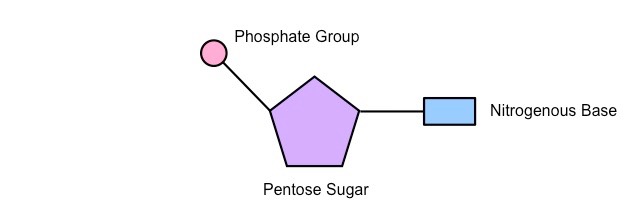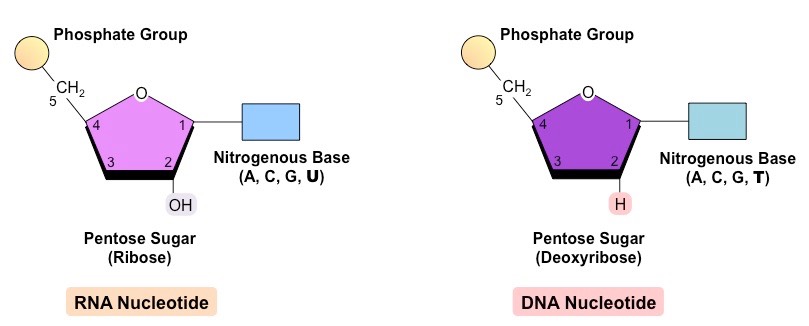![]()
Skill:
• Drawing simple diagrams of the structure of single nucleotides of DNA and RNA, using circles, pentagons
and rectangles to represent phosphates, pentoses and bases
Nucleic acids are the genetic material of the cell and are composed of recurring monomeric units called nucleotides
Each nucleotide is comprised of three principal components:
- 5-carbon pentose sugar (pentagon)
- Phosphate group (circle)
- Nitrogenous base (rectangle)
Both the phosphate group and nitrogenous base are attached to the central pentose sugar
- The nitrogenous base is attached to the 1’– carbon atom (right point)
- The phosphate base is attached to the 5’– carbon atom (left point)
Simple Diagram of a Single Nucleotide

![]()
Understanding:
• The nucleic acids DNA and RNA are polymers of nucleotides
There are two types of nucleic acids present in cells – DNA and RNA
- DNA (deoxyribonucleic acid) is a more stable double stranded form that stores the genetic blueprint for cells
- RNA (ribonucleic acid) is a more versatile single stranded form that transfers the genetic information for decoding
Both DNA and RNA are polymers of nucleotides, however key differences exist in the composition of DNA and RNA nucleotides
Comparison of DNA and RNA Nucleotides

